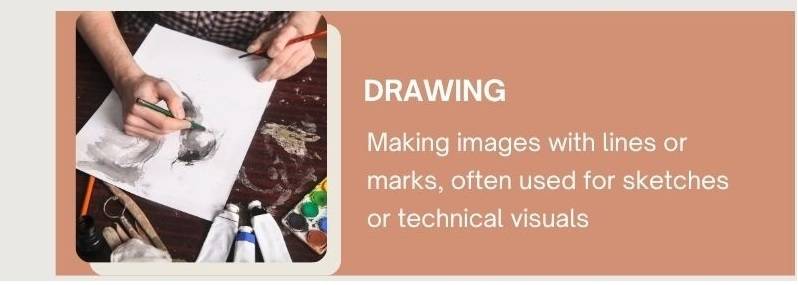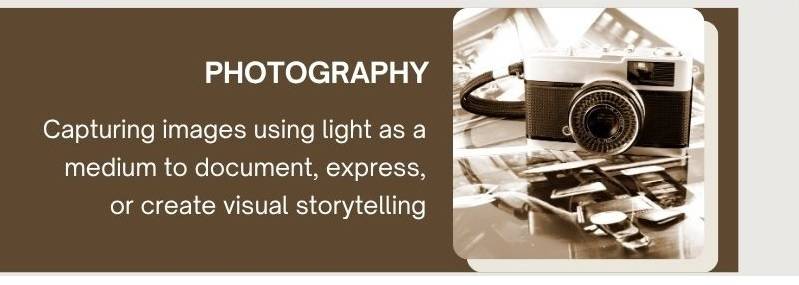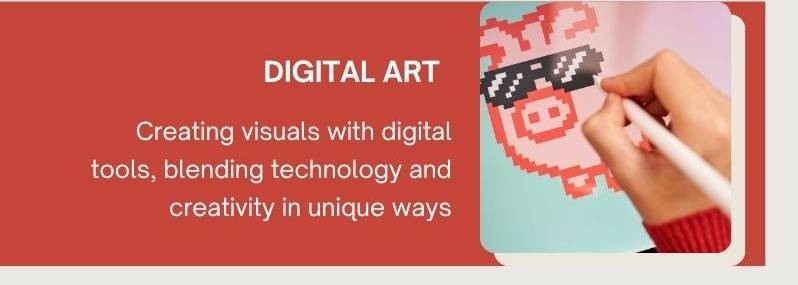Types of Visual Arts: Painting, Drawing, Photography, Sculpture, Digital Arts
Those who are passionate about making a career in a creative field and want to self-explore or self-express themselves can opt for the Visual Art course. There are various forms or types of Visual Arts courses. Candidates planning to pursue Visual Arts courses need to read the article below to know in detail about Visual Arts and various types of Visual Arts.
Visual Arts are forms of art that are visually engaging and enchanting to the eye. They help students develop their basic skills, such as reading, writing, and drawing, while also enhancing their ability to express themselves through visuals. If you are passionate about creativity and want to explore or express yourself through art, following a Visual Arts course could be the perfect fit. There are many different types of Visual Arts courses available. If you are considering a career in this creative field, read this Shiksha article below to learn more about Visual Arts and the various types of visual arts courses.
- Visual Arts: Highlights
- Visual Arts Specialisations
- Types of Visual Arts
Visual Arts: Highlights
For candidates interested in applying to a Visual Arts course, the table below provides an overview of key details, including course levels, duration, fees, entrance exams, average salaries, top recruiting companies, job profiles, and more.
| Highlights |
Details |
|---|---|
| Course Level |
Undergraduate |
| Duration |
3- 4 years |
| Admission Process |
Merit/Direct Admission |
| Examination Type |
Semester-wise |
| Course Fee |
INR 50 K-2 LPA |
| Top Institutes |
MSU, Amity University, Parul University, Bangalore University, Pearl Academy |
| Average Starting Salary |
INR 3-10 LPA |
| Job Positions |
Actor, Drama Artist, Choreographer, Musician, Therapist, Theatre Director, Cinematographer, Community Arts Worker, Theatre Teacher |
| Entrance Exam |
|
| Top Recruiting Companies |
Film and Television Institute of India, Balaji Telefilms, YRF Studios, Universal Arts, Iris Media |
| Popular Courses |
Acting, Textile Design, Graphic Design, Editing, Production Design, Visual Communication, Cinematography |
Visual Arts Specialisations
Candidates are advised to check the space below to learn about the various types of specialisations under Visual Arts.
| Visual Arts Specialisations |
|
|---|---|
| Sculpting |
|
Also Read:
Types of Visual Arts
The Visual Arts comprise various types of Art forms, and candidates interested in taking admission in any Visual Arts course should check the space below to learn about the types of Visual Arts in detail. Different forms of Visual Art courses include drawing, sculpture, painting, ceramics, photography, comics, printmaking, crafts, architecture, filmmaking, video and design. In the current era, the Visual Arts are applied in different areas. Read the space below to learn about the types of visual Arts in detail.
1. Painting
Painting is one of the most traditional and expressive forms of visual art. It involves applying colours or pigments, such as oil, acrylic, or watercolour, to surfaces like canvas, paper, or wood to depict scenes from real life or the imagination. Artists use brushes, palette knives, or even fingers to create textures, patterns, and depth. Painting styles range from classical realism to abstract and modern art.
Examples:
- Oil portrait on canvas
- Watercolour landscape
- Acrylic abstract art
- Mural or fresco
2. Sculpture
Sculpture is a three-dimensional art form made by carving, modelling, casting, or assembling materials like stone, clay, metal, or wood. Sculptures occupy physical space depending on their size and can be viewed from multiple angles. Sculptures may be realistic (figurative) or purely abstract and can range from small to large installations.
Examples:
- Marble statues
- Bronze monuments
- Clay figurines
- Wooden or metal installations
3. Drawing
Drawing is the foundation of many visual art forms. It is a visual representation of technical information in two or three dimensions to facilitate understanding.
Drawing involves a simple process of making marks or designs on a surface, mostly paper, using tools like pencils, charcoal, pens, or markers. Drawings can also be technical or architectural, helping professionals visualise structures and objects and present them in the most simplified manner.
Examples:
- Pencil sketches
- Charcoal portraits
- Ink illustrations
- Architectural blueprints
4. Photography
Photography is the art of capturing images using a camera, using light as the medium. Invented in the 19th century, photography has revolutionised the visual arts by allowing reality to be captured with tremendous precision and immediacy. Photographers utilise composition, lighting, and timing to convey emotions, capture the moments, or craft artistic scenes. Photography is significant across various disciplines, including journalism, fashion, advertising, fine arts, and visual arts.
Examples:
- Wildlife or nature photography
- Portrait photo session
- Black-and-white analogue photography
- Editorial fashion shoot
5. Cinema (Filmmaking)
Cinema is often called the "seventh art, and was included in the artistic list proposed by the philosopher Aristotle in Ancient Greece. It is a combination of moving images and sound, along with solid storytelling, to create compelling visual narratives. The process of filmmaking is extensive and encompasses writing, directing, shooting, editing, and sound design. Cinema is a collaborative and technical art form that entertains, educates, or provokes thought. Forms include feature films, short films, documentaries, and animations.
Examples:
- Feature films/movies
- Short film or indie cinema
- Animated movie
- Documentary films
6. Graphic Design
Graphic design is a combination of art and communication. Designers use images, types, symbols, and arrangements to communicate visually for advertising, branding, web design, and other purposes.
Examples:
- Brand logo design
- Poster or brochure
- Web page layout
- Social media graphics
7. Digital Art
Digital art is a form of creative work created through digital technology. It encompasses a range of disciplines, including digital painting and 3D modelling, animation, video game design, and generative design utilising AI or coding. Digital art is highly experimental and continually evolves using modern technologies such as VR, AR, and blockchain.
Examples:
- Digital illustration or concept art
- 3D character modelling
- AI-generated visuals
- NFT artwork
Visual arts offer a creative way to express thoughts, emotions, and perspectives and learning the visual arts is not for everyone. One must be passionate about learning such art forms before considering pursuing them. Painting allows artists to convey their imagination to life using colours and brushstrokes, while drawing captures detail, form, and movement using simple tools such as pencils or charcoal, and there are more such creative options to pursue a professional career.
That one link between all these art forms is the power to communicate without words, connecting to the viewer's feelings, memories, or sense of beauty. Whether it is a pencil sketch or a sculpture, visual art inspires artists and other budding artists to slow down, observe, and reflect on what they truly admire or wish to portray. Visual art forms not only preserve art culture and history but also push creative boundaries in modern society. Ultimately, each type of visual art contributes to a more vibrant and expressive world, while also providing various opportunities for artists to convey their voices in ways that resonate across India and worldwide.
Read More:








